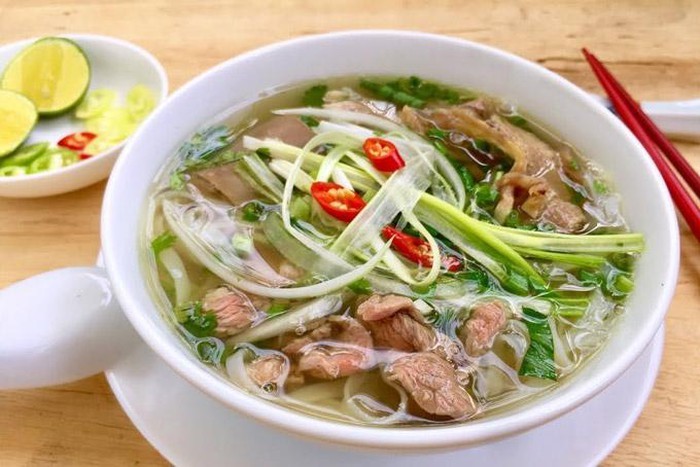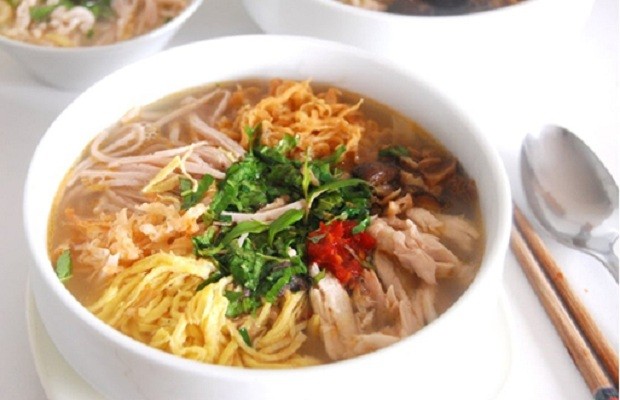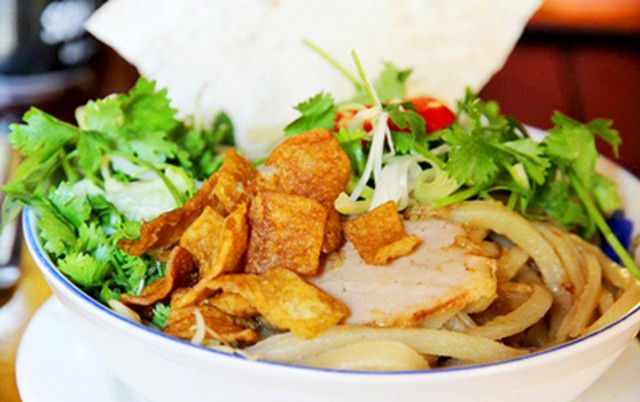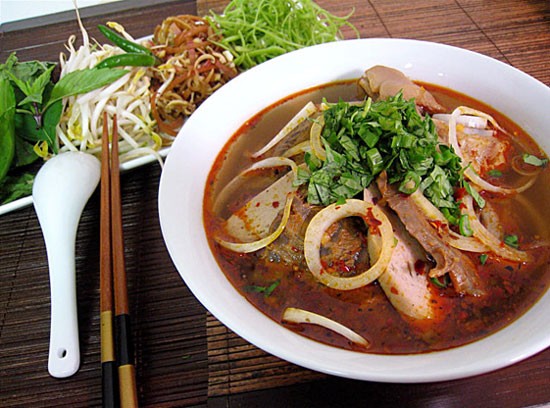
Vietnam’s Ha Long Bay is named among world’s 50 most beautiful natural wonders
|
A: Kanchan Chatterjee of the VOV Natun Radio Listeners Club sent us an article praising Vietnam’s beaches, rivers, Buddhist pagodas and bustling cities and his tour around Vietnam’s scenic spots like Hanoi, Ha Long Bay, Sa Pa, Hue, Hoi An, Nha Trang, and Ho Chi Minh city.
B: He wrote: “It has been a whirlwind to say the least, and we have already ticked off so many breathtaking and unforgettable experiences. But as with any new country, it took us a while to adjust to the culture and way of life here.”
A: Eti Mone of Bangladesh sent us a reception report for a program he heard on June 29 on the frequency of 7220 khz and said he liked the story about the successful ASEAN-36 summit in Vietnam.
B: From Pakistan, Saleem Akhtar Chadhar of the VOV Seven Stars Radio Listeners Club, said that his club’s members listen to our broadcasts daily and the reception is always excellent. He rated SINPO all 4s.
 Vietnamese beef noodle soup Vietnamese beef noodle soup |
A: Sanil Deep of India sent us an additional attachment to hí entry for the “What do you know about Vietnam” contest. He wrote: “The Voice of Vietnam is always deeply entering into the heart of each listener and strengthening the friendship between listeners and broadcasting team. The great work done by your country is always appreciated by Indians like me and we respect you. I will be submitting my monthly report during the first week of July as usual.”
B: Tarzin Ahmed Toma of Bangladesh listened to our broadcast on June 22 from 16:00 to 16:30 on the frequency of 7720 khz. He said he liked the Personality of the Ưeek segment with a story about Dang Soan, a journalist who anchors the daily 30-minute program, known as ‘Vietnamese people from around the globe’ in English at VTC10 NetViet.
A: Mitul Kansal of India sent us an attachment to our “What do you know about Vietnam” contest and wished everyone health and safety in the pandemic.
B: Aparna Chatterjee of India, another participant in our contest expressed his interest in Vietnam’s beautiful nature, its cuisine and its people. He wrote: “All these things are really wonderful. Phở and Bánh mì are just small things you hear about Vietnam. There are other things like “Bánh xèo” and “Chả giò” that taste great! Vietnamese people from the North are really friendly. They help tourists anytime we need it. And the people from the South are really generous. Sometimes, they give us something for free without hesitation.”
 “Bun” are rice stick noodles valued for their slippery texture and mild fragrance “Bun” are rice stick noodles valued for their slippery texture and mild fragrance |
A: Last week, three types of Vietnamese noodles made a list of Asia’s best noodles put together by CNN Travel to provide a beginner’s guide to popular Asian noodles made from ingredients such as rice, starch, wheat, and vegetables.
B: “Pho” noodles are a thinner version of flat noodles made from rice. “Bun” are rice stick noodles valued for their slippery texture and mild fragrance. CNN Travel wrote that “bun” are often served cold with grilled meat, herbs, and a diluted vinegary fish sauce.
 Cao lau rice noodle Cao lau rice noodle |
A: “Cao lau” rice noodles are a specialty of Hoi An, an ancient town in central Vietnam. “Cao lau” is a “noodle soup dish consisting of Chinese-influenced sliced barbecue pork, French-influenced fried croutons, and a variety of rice noodles,” according to CNN Travel.
B: One other type of noodle we’d like to mention is Hue beef noodle soup, a classic example of Hue cuisine.
A: The ingredients for Hue beef noodle soup include a cow’s foot, beef, boiled beef blood, and various flavorings as sliced banana blossom, lettuce, mint, basil, and bean sprouts. Other typical flavorings used for this dish are lemongrass, shrimp paste, and spicy chili oil added later in the cooking process.
B: Two popular cuts of beef used for Hue beef noodle soup are beef tenderloin and beef shank. The cooking method for the two is not the same. Beef shank should be stewed for several hours while beef tenderloin can be added later.
A: The most time-consuming step is making the broth. There are different types of broths for different types of noodles. In any case, pig bones are a must. The broth for Hue beef noodle soup has a combination of flavors: sour, salty, sweet and spicy.
A: In each bowl of noodles, there should be a piece of stewed beef shank, a cube of boiled beef blood, and a slice of beef tenderloin.
B: People eat Hue beef noodle soup with a mixture of lettuce, mint, basil, sliced banana blossom and bean sprouts. Chili is added for flavor and color.
 Hue beef noodle soup Hue beef noodle soup |
A: Hue beef noodle soup can be found all over Vietnam, but if you want an authentic bowl of Hue beef noodle soup, come to the central region of Vietnam.
B: Try making Hue beef noodle soup yourself. For more recipes for Vietnamese dishes, check out the Food Delight segment on our website vovworld.vn. And we’d love for you to share with us recipes for your own local food including photos or videos could be fantastic. Good luck.
B: Submitting his entry to our special contest on Vietnam’s success against COVID19, SB Sharma of India wrote: “We all are happy to know that Vietnam beat the coronavirus by controlling its spread. It was exemplary work by the patriotic government of the Socialist Republic of Vietnam and the dedicated, disciplined citizens of that country. Your victory over the coronavirus is a bright example for the world.”
A: Sharma continued: “Thank you very much for organizing the special contest on Vietnam’s achievement. Vietnam did lots of things to beat COVID-19. I listen regularly to stories about that. I have tried to collect all the facts.I hope you like it. Thank you very much for your good work.”
B: Thank you all for participating in our contest. We’re still waiting for more entries from listeners around the world. Information about the contest is available on our website at vovworld.vn.
A: We welcome your feedback at: English Service, VOVworld, the Voice of Vietnam, 45 Ba Trieu street, Hanoi, Vietnam. Or you can email us at our new email address: englishsection@vov.vn. You’re invited to visit us online at vovworld.vn, where you can hear both live and recorded programs.
A : We look forward to your feedback on the mobile version of vovworld.vn. Once again, thank you all for listening.